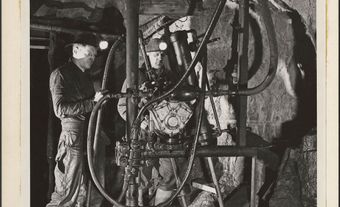This article was originally published in Maclean's Magazine on April 15, 1996
Fuss Over Ontario Salaries
The meeting of hospital administrators last week in Toronto was overshadowed by a very personal issue: the participants' salaries. Under a law that took effect last week, Ontario government departments and agencies are required to disclose the names and salaries of all employees who earn more than $100,000 a year. Gathering a day after the information was made public, the administrators exchanged good-natured barbs about how much money they and other people they knew were making. Still, Garry Cardiff, president of the Ottawa-based Children's Hospital of Eastern Ontario, who was at the meeting, said the newly released information could produce envy and bruised feelings among lower-paid staff and officials. "It's human nature," said the hospital president, who earned $197,899 last year. "I sat across from a fellow who makes $100,000 more a year than me and I thought, 'You're no smarter - and I bet you don't work as hard as I do.' "
In 1993, in what it portrayed as a move to protect shareholders, Ontario's former New Democratic Party government passed legislation requiring corporations listed on the Toronto Stock Exchange to reveal the salaries of their highest-paid executives. The Conservatives, who took power last year, decided in turn to force the publication of top public-sector salaries. In all, some 1,200 of the government's 81,100 employees collected more than $100,000 last year. Most were doctors and lawyers: the attorney general's ministry had 550 people over the $100,000 mark, while the health ministry had 150 people in that category. The highest-paid government employee, though, was John Madden, an assistant deputy minister of finance, at $187,888.
The Tories, who have vowed to slash $9 billion from provincial spending over the next four years, clearly hope their new "sunshine law" will fuel public support for public-sector cuts. But some analysts predicted another response: lower-paid employees demanding parity with colleagues performing similar jobs for more money. Monica Belcourt, a professor of human resources management at Toronto's York University, says the disclosures will also damage morale. Explained Belcourt: "People are going to start comparing their salaries and saying, 'Am I making enough, and is he worth what he is getting?' "
The disclosures generated immediate political repercussions. At Queen's Park, government members seized on the fact that Steve Paikin, a former legislative reporter who is now co-host of a current affairs program for provincially owned TVOntario, receives $132,500 a year, while the network's chairman, Peter Herrndorf, makes $130,556. Paikin said his salary is low by industry standards, adding that he earned more in his previous job at the CBC. But Marilyn Mushinski, the minister responsible for TVOntario, suggested that Paikin's salary was excessive and indicative of why the government is contemplating a sell-off of the network. "That is one of the reasons we are looking at the whole business of public broadcasting," said Mushinski, who makes about $46,000 a year less than Paikin.
Others were quick to point out income disparities among senior officials with similar roles. Lorna Marsden, president of Wilfrid Laurier University in Waterloo, Ont., made $215,556 last year, while Robert Prichard, her counterpart at the far larger University of Toronto, was paid $199,150. And Michael Strofolino, president of the Hospital for Sick Children in Toronto, received $320,001, while his counterpart across the street at Mount Sinai Hospital made $216,754. James Pitblado, chairman of the Hospital for Sick Children, says the institution has to pay top salaries to attract outstanding people. But he also believes other executives will now demand raises. Adds Pitblado: "I don't think the higher people are going to be saying they should take a cut."
In fact, several U.S. studies have shown that disclosure of executive incomes tends to result in pay increases for those at the lower end of the compensation scale. Robert Findlay, chief executive officer of Vancouver-based MacMillan Bloedel Ltd., received $524,771 in 1994. But after it was revealed that his counterparts in the forestry industry were making significantly more, Findlay's income soared 60 per cent to $844,000 in 1995.
Public-sector administrators, however, will be hard-pressed to catch up with their counterparts in the private sector. Hollis Harris received $1,075,886 plus stock options last year as chairman and chief executive officer of Air Canada, a company with revenues of $4.5 billion. Ontario Hydro, in comparison, had revenues of more than $8 billion, yet its president, Alan Kupcis, received $461,303. "These people generally make less than what you would for comparable positions in the private sector," said Alisa Dunbar, a compensation consultant with Sobeco Ernst & Young in Toronto. Over the coming months, some officials on the public payroll will undoubtedly be trying to narrow the gap.
Maclean's April 15, 1996

 Share on Facebook
Share on Facebook Share on X
Share on X Share by Email
Share by Email Share on Google Classroom
Share on Google Classroom


